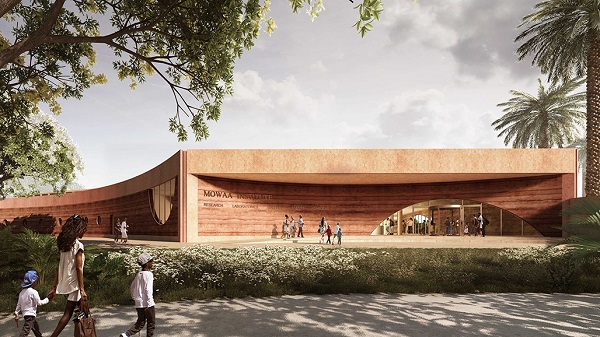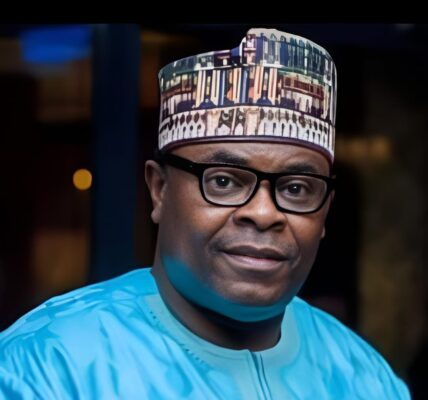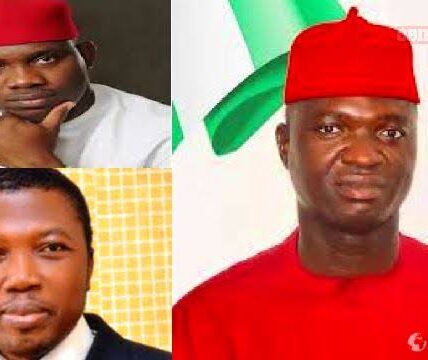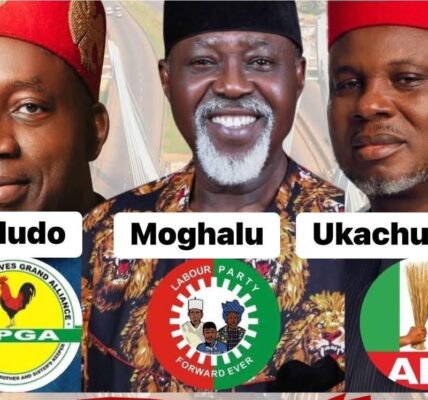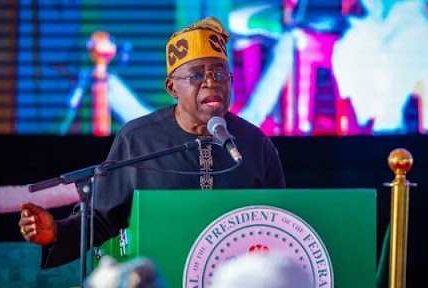How the Benin Royal Museum Became EMOWAA, Then MOWAA – An Open-Source Investigation (2018–2025), By Osasere Osifo
THE THREE NAMES OF BENIN’S MISSING MUSEUM: How the Benin Royal Museum Became EMOWAA, Then MOWAA – An Open-Source Investigation (2018–2025)
By Engr. Osasere F. Osifo
For years, the debate surrounding the restitution of the Benin Bronzes has been dominated by diplomatic headlines, international press releases, and public disputes between key institutions. But beneath the surface lies a lesser-told story: the evolution – and transformation – of the museum meant to receive these world-renowned cultural treasures.
Drawing exclusively from publicly available information, open-source intelligence (OSINT), and verifiable documentation, this investigation charts the trajectory of four interconnected names that define the current controversy:
Benin Royal Museum, Legacy Restoration Trust, EMOWAA, and MOWAA.
The result is a factual timeline that reveals how a project that began with consensus in 2018 splintered, rebranded, and ultimately became the subject of one of Nigeria’s most contentious cultural disputes.
I. 2018 – The Original Vision: The Benin Royal Museum
The earliest publicly recorded museum plan predates all other names mentioned.
In October 2018, official meeting minutes from the Benin Dialogue Group (BDG) – an international consortium of European and Nigerian museums – outlined a joint decision:
1. A new Benin Royal Museum would be established in Benin City.
2. It would host a permanent rotating display of Benin artworks, including pieces to be loaned or returned from European collections.
3. His Excellency Governor Godwin Obaseki presented detailed project plans, jointly developed with the Royal Court of Benin and the National Commission for Museums and Monuments (NCMM).
4. A three-year timeline was set for delivering the museum.
At this stage, no references to EMOWAA, MOWAA, or the Legacy Restoration Trust existed in the public domain.
The plan was singular, unified, and anchored in collaboration between the Palace and the Edo State Government.
II. 2019 – A New Institution quietly Emerges
Public documents from universities, Nigerian media, and partner institutions later reveal that in 2019 a new foundation was established: the EMOWAA Trust.
Although the exact date of incorporation is not publicly available, the Trust is consistently described as:
1. a non-profit foundation, limited by guarantee, and
2. created to oversee a large new cultural project in Benin City.
Crucially, this trust is the same institutional entity later presented publicly under a different name: the Legacy Restoration Trust.
At this point, the change in direction is subtle – no public statements suggest conflict. But the existence of a new institutional framework marks the first quiet departure from the original Benin Royal Museum structure discussed in 2018.
III. November 2020 – A Pivot Becomes Public: EMOWAA and the Legacy Restoration Trust
The transformation became visible on 13 November 2020, when the British Museum, the Legacy Restoration Trust (LRT), and Adjaye Associates jointly announced the start of an ambitious archaeological initiative.
The press release introduced a brand-new entity to the world:
The Edo Museum of West African Art (EMOWAA).
Key details from the announcement include:
• LRT (the same organizational structure as the 2019 EMOWAA Trust) was named as the Nigerian institutional partner.
• LRT had secured roughly $4 million in funding for the EMOWAA Archaeology Project.
• The project would involve the Royal Court of Benin, Edo State Government, NCMM, and local communities.
• EMOWAA was described as the future home of the world’s most comprehensive display of Benin Bronzes.
This was the first major public shift away from the earlier Benin Royal Museum plan.
Without fanfare, the spotlight moved to a new museum concept – EMOWAA – built around a trust structure separate from the Palace-controlled BRM vision.
IV. 2021 – Fault Lines Appear: The Palace Speaks Out
The first visible tension emerged in the summer of 2021.
On 10 July 2021, Oba Ewuare II convened a global press conference at his palace in Benin City.
He declared:
1. The artefacts should be housed in the Benin Royal Museum, not EMOWAA.
2. The Palace had declined to sign a document it believed would “mortgage the rights of the Benin Kingdom”.
This press conference was the moment the dispute moved from subtle divergence to open institutional conflict.
V. 2022–2023 – Two Competing Structures, One Cultural Heritage
In 2022, international museums increasingly aligned themselves with EMOWAA as the presumed destination for restituted bronzes.
But in 2023, a game-changing development occurred:
The Nigerian Federal Government recognized the Oba of Benin as the rightful custodian of all returned Benin artefacts.
This legal recognition effectively strengthened the Palace-aligned Benin Royal Museum vision and created a structural conflict with EMOWAA’s trust-driven framework.
Foreign institutions continued to fund EMOWAA/LRT, while Nigerian federal law now aligned with BRM.
Two visions now existed in parallel:
• BRM, backed by tradition, palace authority, and federal law,
• EMOWAA, backed by state authority, donor funding, and international partnerships.
VI. 2024–2025 – The Final Shift: EMOWAA Becomes MOWAA
A drastic change in naming surfaced in November 2024, when a British Museum blog post introduced a new acronym:
MOWAA – the Museum of West African Art.
The project details, however, were identical to those associated with EMOWAA:
• Same site
• Same archaeological program
• Same Adjaye-designed masterplan
• Same partner network
• Same trust structure (EMOWAA Trust/LRT)
Benin Royal Museum → EMOWAA → MOWAA.
This sequence – now articulated by government officials and Palace sources alike – confirms what the OSINT evidence implies:
The museum initiative changed identities, governance structures, and custodial alignments over a seven-year period, culminating in the institution now known as MOWAA.
VII. Final Conclusions: What the Open Source Intelligence Trail Reveals
Based solely on publicly documented evidence, the project’s genealogy is clear:
1. The original museum was the Benin Royal Museum (2018).No alternative names existed at that time.
2. In 2019, the EMOWAA Trust was created.This was the internal foundation for the next phase of the project.
3. In 2020, the same trust became publicly known as the Legacy Restoration Trust (LRT). This was a branding shift, not a new institution.
4. EMOWAA (2020) replaced BRM as the internationally promoted museum concept.
5. The Palace–State conflict became public in 2021.
6. Federal law in 2023 aligned custodianship with the Palace (BRM).
7. In 2024–2025, EMOWAA was rebranded again as MOWAA.
The evidence indicates:
• One original idea (BRM)
• One trust under two names (EMOWAA Trust / LRT)
• One museum project with two rebrandings (EMOWAA → MOWAA)
• Two competing custodial visions
• One ongoing cultural struggle
Why the Project Shifted from BRM to EMOWAA – A Plausible OSINT-Based Explanation
Public evidence does not provide a single explicit document explaining why the Benin Royal Museum (BRM) was replaced by the EMOWAA project. However, when the timeline, institutional behavior, donor preferences, and governance structures are examined together, a coherent pattern emerges. The shift appears to have been driven primarily by the preferences and requirements of foreign donor institutions, which typically favor Western-style governance frameworks rather than traditional palace-controlled systems.
Foreign museums and governments that participate in large-scale repatriation efforts generally operate under strict internal standards regarding transparency, fiduciary responsibility, conservation capacity, and political neutrality. These institutions are often legally or ethically restricted from transferring multi-million-dollar artefacts or funds to bodies they cannot audit or oversee. As a result, they tend to work through nonprofit trusts or foundations – entities managed by independent boards, subject to international accounting standards, and structured to allow multi-stakeholder representation. This preference is not unique to Benin; it reflects a worldwide pattern in cultural restitution.
Against this backdrop, the evolution from BRM to EMOWAA begins to make sense. In 2018, the BRM was the only recognized project and had the full backing of the Benin Palace, Edo State Government, and the Benin Dialogue Group. But by 2019, the newly created EMOWAA Trust – later publicly referred to as the Legacy Restoration Trust (LRT) – appeared quietly in the institutional landscape. This trust-based structure aligned much more closely with the governance standards required by Western donors.
The timing reinforces this interpretation: the first major infusion of international funding and the official involvement of institutions like the British Museum occurred only after the EMOWAA Trust/LRT structure was in place. By November 2020, when the British Museum announced EMOWAA as the flagship project, BRM had disappeared from international communication. EMOWAA, governed through LRT, became the new donor-friendly vehicle.
The core issue in the BRM–EMOWAA–MOWAA conflict is that MOWAA abandoned the original mandate of the Benin Royal Museum (BRM) and gradually transformed into an independent, donor-driven arts institution rather than a restitution museum. This shift fundamentally broke the original purpose of the project and made reconciliation impossible under the old structure. The BRM, envisioned and discussed in 2018, was explicitly designed to house repatriated Benin Bronzes, sacred ancestral objects, and other cultural heritage materials under the custodianship of the Oba of Benin. Its mission was clear and firmly rooted in cultural restitution, royal authority, and historical continuity.
When EMOWAA emerged in 2020, it publicly claimed to inherit this mission. Official documents stated that EMOWAA would house “the Royal Collection,” create “the most comprehensive display of Benin Bronzes in the world,” and provide state-of-the-art galleries for restituted objects. Foreign institutions aligned their restitution plans with EMOWAA, and the Legacy Restoration Trust (LRT) positioned itself as the governance and funding mechanism behind the project. At this stage, EMOWAA was publicly presented as the successor to BRM, not as a replacement with a different purpose. That alignment proved short-lived.
Between 2021 and 2023, EMOWAA gradually drifted away from being a restitution museum. This shift began when the Royal Palace rejected the trust-based governance structure, with the Oba refusing to sign a document he believed compromised the Kingdom’s custodial rights. This severed EMOWAA’s legitimacy as a host for the bronzes. Despite this, foreign donors continued funding EMOWAA, allowing the project to maintain its momentum. By 2022, EMOWAA’s public description had changed: it was increasingly framed as an “arts and culture hub,” not a restitution institution. This transformation was visible in press releases, architectural briefs, and donor communications. The decisive break came in 2023, when the Nigerian Federal Government formally declared the Oba of Benin as the rightful custodian of all repatriated artefacts – legally blocking EMOWAA from hosting returned objects even if it wanted to. With its original custodial purpose no longer viable, EMOWAA pivoted.
The final transformation occurred between 2024 and 2025, when EMOWAA rebranded into the Museum of West African Art (MOWAA). This was not merely a renaming; it represented a complete mission shift. MOWAA repositioned itself as an arts research center, creative hub, contemporary exhibition space, training institute, and archaeological campus. It no longer identified itself as a restitution museum
Where Obaseki Went Wrong – A Concise Evidence-Based Summary
Based on publicly available evidence, Governor Godwin Obaseki’s missteps in the BRM → EMOWAA transition fall into several clear patterns of governance, communication, and legitimacy failure.
The foundational error was shifting the project away from the Benin Royal Museum (BRM) – a jointly endorsed Palace–State initiative – toward the EMOWAA/LRT trust structure without transparency, consensus, or cultural alignment.
First, Obaseki moved the project from BRM to EMOWAA between 2019 and 2020 without any formal public explanation. There were no documented minutes showing the Palace’s agreement, no public statement justifying the transition, and no broad stakeholder engagement. This lack of transparency created the perception that a Palace-backed institution had been replaced with a donor-controlled trust behind closed doors.
Second, he advanced the LRT/EMOWAA trust model before securing legitimate buy-in from the Benin Palace. The July 2021 press conference revealed that the Palace rejected a governance document that shifted custodial authority toward the Trust – calling it a threat that would “mortgage the rights of the Kingdom.” By presenting this document only after donor commitments were already underway, Obaseki reversed the proper order of legitimacy.
Third, Obaseki allowed international donors to believe that EMOWAA was the official, Palace-approved custodian of repatriated artefacts. From 2020–2022, institutions like the British Museum and German museums promoted EMOWAA publicly, while no comparable messaging was issued affirming the BRM. This created a damaging misalignment: donors believed the trust-led museum was the rightful destination, while culturally and legally, the artefacts belonged under Palace custodianship – a fact reaffirmed by the Nigerian Federal Government in 2023.
Fourth, he proceeded with foreign-funded EMOWAA construction and partnerships without resolving custodianship first. He neither secured a formal governance agreement with the Palace nor established a shared framework for managing returned artefacts. This led to EMOWAA becoming legally misaligned with federal policy and culturally misaligned with the Palace before the first stone was even laid.
Fifth, Obaseki misjudged the importance of cultural legitimacy in Benin. While international donors prioritize independent boards, audited accounts, and trust-based governance, cultural legitimacy in Benin rests on royal custodianship and ancestral heritage. By optimizing for donor governance while overlooking the Palace’s foundational role, he created a museum that appeared credible internationally but illegitimate locally – a legitimacy gap that led to protests, community backlash, and ultimately the revocation of MOWAA’s land titles in 2025.
In summary:
Obaseki’s core mistake was advancing a donor-driven, trust-controlled museum (EMOWAA/LRT) without first securing, respecting, or formally aligning with the Palace’s custodial authority – undermining cultural legitimacy at home and political support in Nigeria, ultimately costing the project its foundation.
Final Reflection
The story of BRM → EMOWAA → MOWAA is not merely about names or institutions.
It is a story of custodianship, identity, and the risks of redirecting cultural heritage projects without transparency or consensus.
It shows how a project born from unity in 2018 gradually fractured under competing interests and conflicting legitimacy frameworks.
And it explains, using only public evidence, how Benin’s restitution museum became one of the most contentious cultural conflicts in modern Nigerian history.
Despite the turmoil surrounding its evolution, the fundamental truth remains that this project is still viable. A world-class cultural institution in Benin City, properly aligned, transparently governed, and rooted in ancestral legitimacy, would be transformative for Edo State. Such an institution could stimulate tourism, create jobs, expand academic research, attract global scholars, inspire local creatives, and reaffirm Benin’s place as one of the world’s oldest continuous civilizations, known for its achievements in bronze casting, architecture, statecraft, and diplomacy. This project should not be allowed to die simply because it lost its way.
Recently, Nigeria’s Honourable Minister of Culture and Tourism publicly recognised that traditional institutions were genuinely wronged, and that the wrongs must be righted with necessary amends made for the benefit of our culture and our state. Her statement reflects a national understanding that the pathway to reconciliation begins with acknowledging past missteps, restoring the dignity of the rightful custodians, and rebuilding the project on a foundation of trust, transparency, and cultural respect. A sustainable and honourable solution will require all parties to participate fully and take responsibility for the roles they played in the fractured process.
There must be a full restoration of traditional custodianship. The Oba of Benin is not merely a cultural figurehead, but the living embodiment of a civilization stretching over a thousand years, with spiritual, legal, and historical authority that predates Nigeria itself. Any restitution museum must honour this lineage. The Palace’s custodianship is not symbolic; it is the legitimate and internationally recognised anchor of the Benin cultural universe. Alongside this, there must be a transparent realignment of governance. A new governance structure that blends the strengths of traditional custodianship with modern donor accountability should be developed jointly, not imposed behind closed doors. Such a shared model can offer clear custodial authority, clear fiduciary oversight, a co-authored framework, transparent reporting, and deep respect for cultural ownership.
Reconciliation with donors is also essential, and this must be done through honesty and clarity. Foreign partners need to be briefed openly about the rightful custodianship, the new governance model, and the cultural obligations at stake. Most donor institutions seek clarity rather than control, and once they understand the legitimate structure, their alignment will naturally follow. Furthermore, the original vision can be reclaimed without discarding meaningful progress. The archaeology work, conceptual designs, and creative infrastructure developed so far should not be wasted. Instead, these elements should be respectfully reoriented toward the restitution mission first envisioned in 2018. This is not only possible but desirable.
A moral appeal must also be made
Politics must never again threaten the throne. One of the most painful aspects of this saga was the manner in which some partisan political actors, on all sides, weaponised the issue for short-term gain. In the process, they disrespected the Benin Throne, dragged an ancient institution into political mudfights, and deepened divisions within the state. This must never be repeated. The Throne of Benin is not a campaign prop, bargaining tool, or political accessory. It is one of Africa’s oldest surviving dynastic institutions, older than many European monarchies, and one of the few cultural systems that shaped West African diplomacy, art, military strategy, metallurgy, and philosophical development for centuries. To attack or demean such a throne is to attack our collective identity. To politicise it is to weaken the foundation of our civilization. We all deserve better.
If there is any lesson in the chaotic evolution from BRM to EMOWAA to MOWAA, it is that great projects do not fail because of lack of potential, but because of lack of alignment. Benin deserves a restitution museum worthy of its history, one that respects the people, satisfies donor governance requirements, and elevates Edo State’s cultural significance on the global stage. The wrongs can be corrected. The fractured relationships can be healed. The original vision can still be fulfilled. But this will only happen if the Palace is honoured, the State acts transparently, donors are engaged with honesty, and politics is kept far away from sacred institutions. With a unified approach, this project can be transformed from a controversy back into what it was always meant to be: a beacon of heritage, a true home for restituted treasures, and a living bridge between Benin’s ancient past and its modern future.
Osasere Osifo writes from the land of the free.

